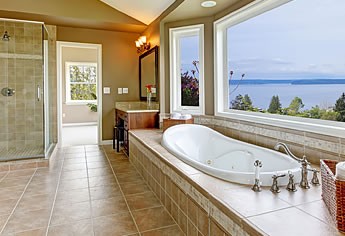Painting Techniques
Exterior painting needs to be performed every 3 to 5 years, and if the proper prep work is done you should only have to do it every 5. Make sure the surface is clean and remove all the loose paint. A power washer can remove all the dirt and some of the loose paint, but never paint on the same day as power washing unless you are absolutely sure what you are painting is dry. Scraping and an orbital sander can remove what is left. Apply a paint able caulk where needed in cracks and around windows and doors.
If you are applying stain to wood siding then no primer is needed. The stain soaks into the wood. If you are using paint, then prime the bare areas so the paint will adhere and last longer. Try not to paint in direct sunlight, especially between 10:00 a.m. and 2:00 p.m. when the sun’s rays are strongest because it can cause the paint to bubble or not adhere correctly. Also read on the side of the paint can or bucket for the proper temperatures for painting. Most recommend not painting above 90 degrees or below 50 or 35 degrees (depending on the paint or stain). The paint needs a full 24 hours to properly dry so if rain or low temperatures are expected at night hold off until you know the weather will cooperate.
Exterior painting on a house or building can be very time consuming, physically exhausting, and quite dangerous if heights are involved, so if you aren’t up to it you might consider hiring a Painting Contractor to do the job. A Painting Contractor can have his/her painters do the job in days versus what might take you a month with all your spare time. A Painting Contractor will have all the necessary tools and materials to get it done correctly as well.
A spray gun can be used to cut your time in half but you have to be careful of overspray. Your neighbor won’t care much for the color you have chosen to be speckled all over his house or car. Your local paint store can assist you with any questions you might have on your project, so good luck and be safe!




